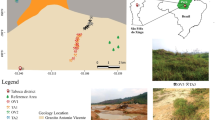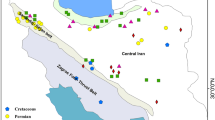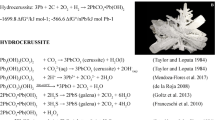Abstract
Mössbauer analysis of archeological iron artifacts allows to determine mainly the presence of the β ferric oxyhydroxide, akaganeite, in the rust products. This confirms the role of Cl− ions in the environment leading to difficult preservation in a museum.
Similar content being viewed by others
References
J.M.R. Génin, D. Rézel, Ph. Bauer, A.A. Olowe and A. Béral, Electrochemical Methods in corrosion Res., Mat. Sci. Forum 8 (1986) 477.
D. Rézel and J.M.R. Génin, Hyperfine Interactions 57 (1990) 2067.
M.J. Rossiter and A.E.M. Hodgson, J. Inorg. Nucl. Chem. 27 (1965) 63.
C.L. Herzenberg and D. Toms, J. Geophys> Rev. 71, n° 10 (1966) 2661.
W. Kündig, H. Bömmel, G. Constabaris and R. Lindquist, Phys. Rev. 142 (1966) 327.
Author information
Authors and Affiliations
Rights and permissions
About this article
Cite this article
Refait, P., Ouahman, R., Forrières, C. et al. The role of Cl− ions in the oxidation of iron artifacts from chlorinated archeological environments. Hyperfine Interact 70, 997–1000 (1992). https://doi.org/10.1007/BF02397496
Issue Date:
DOI: https://doi.org/10.1007/BF02397496




